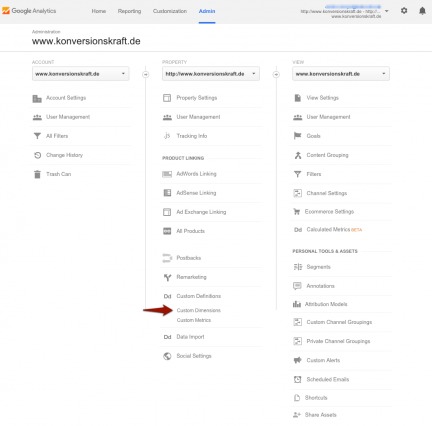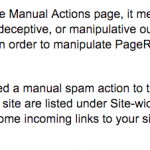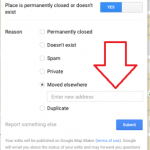Why You Shouldn’t trust the Conversion rate in Google Analytics
December 23, 2015
The success of a web based business is measured by means of quite a lot of warning signs.
the info required comes principally from net analytics tools – the most well-liked being Google Analytics. but what if the tool isn’t reporting what people expect it to file? What if that you would be able to’t trust the entire metrics in GA?
Google Analytics – One dimension fits All
Google Analytics is modest. The predefined monitoring code is implemented in the supply code of the webpage – regularly without major adjustments – and the info begins to drift.
that is fast and simple and surely one of the most explanation why this instrument is used in practice via so many companies (oh yes, and it is usually free ;)).
Google Analytics’ tracking code is designed to quilt any web page in the world as good as that you can imagine. A kind of “one size matches all prognosis hat,” which fits any website, anyplace. in the basic version of the tracking code, Google Analytics does no longer do rather more than measure and interpret the page views of your internet web page.

Why Shouldn’t I trust the info?
after all, the metrics aren’t flawed.
it is only that from time to time they aren’t what they’re expected to be. to provide extra proof to this remark, we will be able to take a look at two necessary (and regularly misunderstood) metrics:
- periods
- bounce charge
A Session Does no longer Equal a visitor
The metric “sessions” is an effective instance. periods are ceaselessly used for the calculation of key metrics, such as the conversion charge.
A session in Google Analytics is defined as, “a group of interactions that take place to your web site within a given period of time.”

also, you have to be aware of, that a session ends when…
- state of being inactive lasts longer than 30 minutes (a visitor interacts with you web site, goes to lunch, comes again after 31 minutes, and keeps interacting).
- a new day begins (a customer enters the website at 11:fifty nine PM, at 12:00 AM his session is terminated and a new one is began. finish of day depends on your view timezone settings).
- the campaign source modifications (a visitor in an instant enters the web page and closes it again. After a few minutes he comes back via organic key phrase search. for example: simply the usage of Google Chrome and typing the web site’s identify with out high-stage (i.e. .com, .org,) within the url box).
- a customer enters the website on a sub-degree-domain (a web page proprietor makes use of sub-stage-domains for a few landing pages and didn’t define the domain within the cookie settings properly. If the customer begins his trip on one of the most sub-ranges, a new session will generate as quickly because the visitor swap to the common area).

These data must no longer be thought of as errors. they are merely the definition of a session – and everybody who is working with Google Analytics has to concentrate on it.
the issue with sessions
The error is to equate a session with a customer. as a result of, as described above, a single customer can set off a number of periods and will do this – on a regular basis.
if you happen to now take a look at the channels report in Google Analytics, you need to recognize that the metrics displayed there are calculated based on periods.
The E-commerce Conversion rate is also calculated based on classes (transactions*100/sessions).

A session is a blended metric of Google Analytics, whose standards you need to be aware of so as to draw conclusions.
It can be that for the respective trade model (e.g. affiliate), classes symbolize the correct reference. within the well-liked e-commerce website online, on the other hand, this is frequently now not the case.
answer: customized Dimensions
Enrich classes with extra exact knowledge is the first step to extend the quality of your data. A just right begin for getting this completed is the institution of custom dimensions to your Google Analytics account.
in the property settings in Google Analytics you’ll in finding the wanted menu items:

in addition to the adjustments in Analytics, the monitoring code also must be tailored. The technical prospects are manifold. as an example, a visitor id can also be transferred from the keep gadget to Google Anlaytics, which makes it that you can imagine to track a user across sessions and even units.
The privateness issue must be clarified in advance. basically, person-related information reminiscent of e mail addresses cannot be handed on to Google Analytics. however a randomized, gadget-generated number would possibly remedy this problem. alternatively, what to trace and what to pass on need to be clarified in every individual case to verify no rules are damaged.
an actual technical integration of useful dimensions will also be found on the analytics weblog of Simo Ahava, which is, via the way, an excellent weblog concerning all questions about Google Analytics.
> click on right here for customized Dimensions
What soar fee in reality method
any other very thrilling and standard metric is the leap fee.
just like the metric periods, the soar rate simplifies matters to make easier conclusions. That’s now not unhealthy per se, however it also bargains room for misinterpretation. right here’s Google’s definition of soar charge:
“jump fee is the proportion of single-web page classes (i.e. periods during which the particular person left your website online from the entrance web page with out interacting with the page).”
the problem with the bounce charge
To make this observation 100% clear, a couple of points will have to be added:
level #1
The part “with out interacting“ is frequently overlooked, but it is important to, because now not just a pageview impacts the jump charge but additionally an outlined interaction on the web page.
example:
An auto-play video or a live chat window each and every set off a pageview or an adventure and are carried out on a touchdown web page. This touchdown web page will have an tremendously low jump charge. but this does not imply that the standard of the web page is superb.
a real quote from Caleb Whitmore I read in a blog is: “A three.8% leap price isn’t truly just right, it’s damaged.”
level #2
visitors who have been registered as a soar have still visited the website online. this will sound trivial, however it is not always taken into account.
example:
A customer seems to be for opening occasions, phone numbers, address, and many others. and finds them right away on the primary web page. He could even fill out a form, relying on how that is implemented. The visitor leaves the page satisfied, however is counted as a soar – a cheerful soar.
point #3
The leap fee refers to individuals who entered the web site on this explicit web page (entries). So only single pageview sessions are essential. that suggests then again, that subpages on which only some users enter, the bounce price is completely beside the point.
instance:
Your basket has a leap price of more than 90%. alternatively, because the basket recorded most effective ten entries (the rest of the visitors had prior to now been on the page), this metric offers you no statement in any respect.
furthermore, as described above, the jump charge is also calculated in keeping with periods.
subsequently, using the soar rate is very tempting when it comes to speedy determine potentials. but misinterpreted, it is also very susceptible to error. subsequently it is extremely necessary to pay attention to the exact size. because:
- A bounce isn’t good.
- A bounce isn’t unhealthy.
A leap is just a bounce.
answer: Adjusted bounce price
The soar price will also be cut off from arbitrariness with the aid of being enriched with information.
for example, including the time on the web page and even the scroll-depth of the visitor will get you a new “adjusted” jump price. This one is very attention-grabbing for bloggers and repair suppliers, as a result of it offers details about how a lot the visitor has handled the page. but in addition watch out. The adjusted bounce charge just isn’t easy to enforce and may also be misinterpreted.
in the event you track the scroll-depth of your guests, you want to make a decision to track them either by means of
- pixels
- elements
- %
by selecting pixels or p.c, it is higher to trace the visitors in an predefined area (i.e. 50%, and so forth.) then the true share. otherwise you are going to have problems to investigate the information.
in terms of adding the time the customer spent in your web page, you need to know after how many seconds (and even minutes) that you would be able to tag a leap as a comfortable “prospect.” this is a very explicit question, which sometimes you can’t even be answered for one firm. it can be totally different from page to page.
Let’s say you have got a weblog. people wish to be having a look for maybe as a minimum 60 seconds, after that you may make sure that they are interested to your content.
you probably have a landing web page selling only one Product, it may well be okay to tag guests as a prospect after twenty seconds. also it may well be k if the visitor didn’t scroll at all, because all relevant information is above the fold.
so that you see, the whole adjusted bounce fee thing is supplying you with more knowledge, nevertheless it does no longer take the responsibly of decoding these numbers from you. It simply makes it more straightforward (or tougher – relying what you call to mind numbers ;))
again, if you wish to use adjusted jump fee for your webpage, it is important to do a number of code implementations on your website online. And right here is a superb description of how this may also be carried out.
Conclusion
Google Analytics is, with the aid of default, a instrument that measures and summarizes web page views. This makes the combination straightforward and reduces limitations for new users. then again, as easy as it’s to combine the code, it’s only as straightforward to make a mistake relating to evaluating the info.
but don’t get me wrong – this isn’t only happening in Google Analytics. Misinterpreting data is a cross-software-phenomenon, which has its roots within the credulity of the folks. Blind knowledge belief leads to destruction. An figuring out (at the least in rudimentary form) for the determination of the information will result in more skepticism. which you could not preserve the entire reviews from an analytics device safely as a truth.
Metrics comparable to classes or leap charge are just right examples of why we cannot blindly belief information. To steer clear of misinterpretation, we must subsequently flip the “one measurement matches all analytics hat” into “made-to-measure” diagnosis. Then, as straightforward as Google Analytics is at first, it is going to provide you with many alternatives to amplify it. This should be used to convey your individual knowledge to a stage with the intention to avoid misinterpretation and bring new insights.
Digital & Social Articles on trade 2 community
(30)













